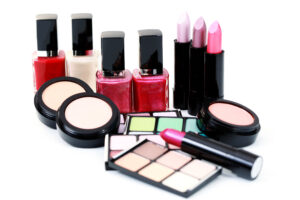Back to: Pre Vocational Studies JSS 1
Welcome to class!
In today’s class, we’re going to be talking about materials and tools for making cosmetics. I trust you will enjoy the class!
Introduction
Have you ever wondered how cosmetics are made? It’s a fascinating process that involves a variety of materials and tools. In this lesson, we’ll learn some of the key components used in the cosmetic industry.
Materials

- Raw Ingredients: These are the basic building blocks of cosmetics. Some common raw ingredients include:
- Water: Used as a solvent and humectant.
- Emulsifiers: Help to mix oil and water-based ingredients.
- Thickeners: Increase the viscosity of cosmetics.
- Preservatives: Prevent the growth of bacteria and fungi.
- Fragrances: Add scent to cosmetics.
- Colors: Give cosmetics their desired color.
- Active ingredients: Provide specific benefits, such as moisturizing or sun protection.
- Packaging: The container that holds the cosmetic product. It can be made from various materials, including glass, plastic, and metal. Packaging plays a crucial role in product presentation and preservation. It can also influence consumer perception and purchasing decisions.
- Labels: Provide information about the product, such as ingredients, usage instructions, and warnings. Labels are essential for consumer safety and awareness. They also help to comply with regulatory requirements.
Tools

- Mixing Vessels: Used to combine ingredients. These can be made from glass, plastic, or stainless steel. The choice of vessel depends on the ingredients and the mixing process. For example, glass vessels are often used for clear products, while stainless steel vessels are more durable and can withstand higher temperatures.
- Blenders: Used to mix ingredients thoroughly. There are various types of blenders, including hand blenders, mixers, and homogenizers. The type of blender used depends on the desired consistency and the ingredients being mixed. For example, hand blenders are suitable for smaller batches and less viscous mixtures, while homogenizers are used for creating emulsions with a fine particle size.
- Measuring Tools: Used to measure ingredients accurately. This includes scales, measuring cups, and measuring spoons. Accurate measurements are essential for ensuring product quality and consistency. The choice of measuring tool depends on the quantity and type of ingredient being measured.
- Heating and Cooling Equipment: Used to heat or cool ingredients as needed. This can include hot plates, water baths, and refrigerators. Heating and cooling are important steps in many cosmetic manufacturing processes. For example, heating can be used to melt waxes and oils, while cooling can be used to set mixtures and prevent phase separation.
- Filling Machines: Used to fill cosmetic products into their containers. Filling machines can vary in size and complexity, depending on the production volume and the type of product being filled. Automated filling machines can increase efficiency and reduce the risk of human error.
- Sealing Machines: Used to seal containers, preventing leaks and contamination. Sealing machines can be manual or automated, and they can use various sealing methods, such as heat sealing, ultrasonic sealing, and adhesive sealing. Proper sealing is essential for product preservation and safety.
Example
Let’s imagine we want to make a simple lip balm. We would need:
- Raw ingredients: Beeswax, cocoa butter, shea butter, coconut oil, and flavoring.
- Packaging: Tubes or jars.
- Tools: Double boiler, measuring spoons, spatula, and filling tubes.
To make the lip balm, we would:
- Melt the beeswax, cocoa butter, shea butter, and coconut oil in a double boiler. This ensures that the ingredients melt evenly without burning.
- Add the flavoring and stir well. The flavoring can be added to taste and can be natural or synthetic.
- Pour the mixture into the tubes or jars. It’s important to fill the containers to the desired level and avoid air bubbles.
- Let the lip balm cool and solidify. This process can take several hours or overnight. Once the lip balm has set, it is ready to be used.
Summary
As you can see, making cosmetics involves a variety of materials and tools. By understanding these components, you can gain a deeper appreciation for the products you use every day. Additionally, this knowledge can be helpful for those interested in starting their own cosmetic business or simply experimenting with homemade beauty products.
Questions
- What is the difference between water-based and oil-based ingredients?
- What is the purpose of emulsifiers in cosmetics?
- Why are preservatives used in cosmetics?
We have come to the end of today’s class. I hope you enjoyed the class!
In the next class, we shall be discussing Safety, Quality and regulation control of cosmetics products in Nigeria
In case you require further assistance or have any questions, feel free to ask in the comment section below, and trust us to respond as soon as possible. See you in the next class!
